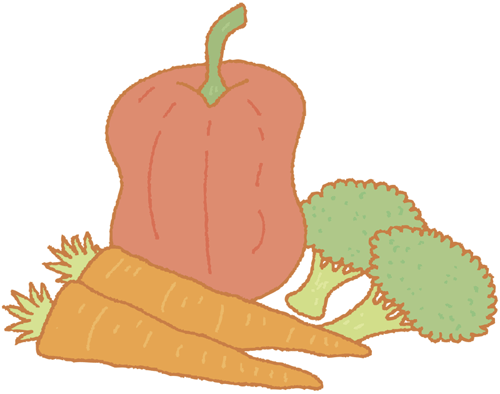|
Don’t be surprised if your newly independent toddler stomps his foot and demands his own way. Fussy eating is a hallmark of the toddler years; it’s best to relax and let it run its course. Persevere and continue to offer new foods confidently and positively.

| Q: |
If my toddler flatly refuses a food over and over again, should I give up?
| | A: |
Many toddlers are averse to trying new foods, but the good news
is that research consistently shows that with perseverance, most will
accept them eventually. The trick is to present the food in an
enthusiastic manner, so that your toddler associates new tastes with a
positive experience, and to continue offering it—in different guises, if
necessary—until it becomes “familiar.” If the same zucchini keeps
appearing on her plate week after week, she’ll soon lose interest in
resisting it, and simply get on with the job of eating.
If your toddler shows a
violent dislike to a certain food, gags or vomits when eating it, and
refuses it repeatedly, you may want to discuss this with a doctor. You
can try to leave that food off the menu for a month or so and then try
again. Or, you can change the format of how you serve that particular
food to your little one. If she won’t try a scrambled egg, for example,
then offer some French toast instead. If the response is the same, don’t
push it. It may be a temporary aversion, or something more long-term,
and you’ll do no good by forcing her to eat something she genuinely
doesn’t like.
|
| Q: |
My child only likes sweet foods, and won’t eat anything savory. What should I do?
| | A: |
There is no doubt that the majority of toddlers prefer sweet
tastes, but research indicates that most food and flavor preferences are
“learned” rather than “instinctive.” In a nutshell, this means that
early experiences with food are important in developing a liking for
different tastes. So, don’t give up! Start by blending together sweet
and savory—pork with apple purée, for example, or chicken tagine with
sweet potato and dried apricots. Choose some naturally sweet savory
foods, such as sweet potato, squash, or even red peppers, whose bright
colors may also convince him that they are sweeter than they are.
Gradually decrease the “sweet” element of the dishes, until he is eating
savory foods. Ultimately, however, if you continue to serve just savory
foods, he will develop a taste for them.
|
| Q: |
My toddler will only eat fruit, and no vegetables. How can I encourage better eating habits?
| | A: |
Fruit is undoubtedly sweeter and more instantly satisfying than
the average vegetable, but it doesn’t supply the full range of vitamins
and, in particular, minerals that your child needs. Try mixing fruit
with vegetables—couscous with raisins, apricots, sautéed peppers, and
onions is a good start. As long as the “fruity” taste is overwhelming,
she’ll probably give it a go. Also use both fruit and vegetable juices
when cooking savory dishes. Try to use vegetables and fruit together
too—a chicken dish with fresh pineapple and dried apricots goes well
with water chestnuts and steamed spinach.
|
| Q: |
How can I stop mealtimes from becoming a battleground?
| | A: |
Most toddlers have periods of fussy eating. One reason is that
they are asserting their independence and like to have a say in what
they do. This can make mealtimes tense for everyone. The most important
thing you can do is to try not to make a fuss. If your toddler realizes
that you are upset or angry when he doesn’t eat, he’s gained an
emotional advantage, which he can play whenever he chooses. If you don’t
react, he’ll likely choose a new battle. Continue offering the food you
want him to eat, and silently removing the plate when he has eaten (or
not eaten) what he wishes. When he realizes that he isn’t going to get a
reaction by resisting certain foods, he’ll likely eat them. It’s also a
good idea to offer your child choices .
|
| Q: |
My toddler is a fussy eater. Should I offer supplements?
| | A: |
While a healthy, varied diet will provide your toddler with the
vitamins and minerals she needs for good health, fussy eating does mean
that her diet is limited. For example, a fussy toddler who refuses to
eat fruits and vegetables will be missing vitamins and minerals that are
essential for her growth and development, as well as her immunity to
infections. If she doesn’t eat meat, she may well be low in iron, which
will affect her concentration and energy levels, among other things .
The American Academy of Pediatrics recommends vitamin supplements for
all under-twos, which can help to supply what’s missing, and ease your
mind, too. They can never take the place of a healthy diet, but they’re a
good stopgap when kids resist our attempts to serve healthy meals. Drop
form is best for under-twos.
|
Breakfast fare
Make breakfast time fun. If
your toddler is resistant, offer a range of healthy options, and ask
him to choose from them. A little platter with some fruit, a few squares
of toast with peanut butter, a boiled egg with soldiers, and a handful
of breakfast cereal (see recipe, Honey, Oat, and Raisin Crisp)
may tempt him. If necessary, offer a favorite sandwich and some cubes
of fruit, or leftover pasta shapes and chicken. Once he becomes
accustomed to breakfast, you can revert to more standard fare.
Honey, Oat, and Raisin Crisp
Oats make a good breakfast cereal as they contain slow-burn carbohydrates that help to keep blood sugar levels on an even keel until snack time. Serve this with milk and delicious fresh berries to tempt even the fussiest little eater.

5 minutes
25 minutes
NOTE
About 8 child portions
2 cups rolled oats 2 heaping tbsp dried, unsweetened, shredded coconut Pinch of salt 1/4 cup packed light brown sugar 2 tbsp sunflower or olive oil, plus a little extra for greasing 2 tbsp honey 1 tsp vanilla extract 1/3 cup raisins 3 tbsp sunflower seeds (optional) For serving
Preheat the oven to 325°F.
Put the oats in a large
bowl and stir in the coconut, salt, and sugar. Whisk together the oil,
honey, and vanilla extract and pour this over the oats. Stir until the
oats are evenly coated, then spread out in a lightly oiled baking pan.
Bake until golden and
crisp, about 25 minutes, stirring several times. Watch carefully toward
the end of the cooktime to make sure the oats don’t burn. Let cool in
the baking pan, then mix in the raisins and sunflower seeds, if using.
Store in an airtight container.
Serve each portion (about 2 tbsp, depending on appetite) with cold milk and topped with berries.
|